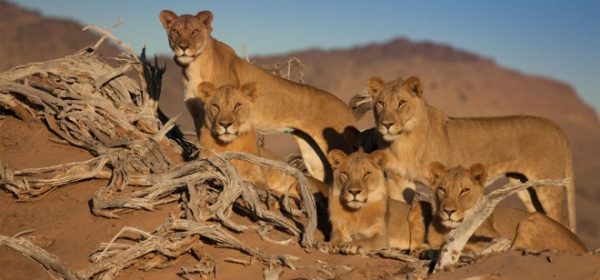SELECTED ARTICLE FROM OUR SPECIALISTS
Wildlife Versus Humans
Two recent tragic incidents of human/wildlife conflict have served to bring into sharp focus the issues that face wildlife and an expanding human population living close to protected and remote wilderness areas.
The victims in both cases were lions, famous as the stars of recent wildlife documentaries.
First came the tragic news that three members of the Marsh Pride stars of the BBC documentaries “Big Cat Diary” had died after feeding on the poisoned carcass of a cow.
Whilst the perpetrators of this act are unknown, the poisoning of carcasses is not unknown in the Maasai Mara. The local Maasai people have given up some of their traditional grazing rights in return for a not inconsiderable stipend from the local authorities and conservancies. The Maasai use that money to buy more cows, a traditional measure of wealth in Maasai society, but they have less land for those cows to graze on. The resulting overgrazing means that the herders need more land to graze their cattle.
During the day, tens of thousands of unfenced cattle graze near the reserve. At nightfall, when the tourists go back to their camps, the animals are herded into the reserve where the grazing is better. This brings the domestic animals into contact with nocturnal predators, including lions with inevitable consequences.
The second tragedy occurred in Namibia where a trio of male lions died in August also as a result of poisoning. They were three of the five brothers, known as “the five musketeers,” who starred in the film “Vanishing Kings: Lions of the Namib” which aired on the National Geographic channel earlier this year.
Philip Stander, founder of the Desert Lion Conservation project, the organization tracking the lions, found their carcasses on August 10 near the village of Tomakas, according to the Namibian. It is believed that this was an act of retaliation by farmers who had laced a donkey buy acyclovir online us carcass with poison after the lions had killed the donkey.
“This is truly a tragedy for Namibia’s lion conservation efforts in a very challenging environment that balances lion and human coexistence,” Stander said in the Namibian report. “With no more than 150 lions remaining in the country, the unnatural loss of any of them is cause for concern”
This isn’t the pride’s first tragedy. A villager shot and killed one of the other brothers in July after an incident at a temporary cattle post, which intensified fears over the remaining brothers’ safety prompting a decision by the government to move the lions from the Tomakas area to the Uniab Delta, which was thought to be safer. Alas tragedy struck before this plan could be put into action.
Namibia’s desert lions, which mostly roam outside protected areas in remote, arid northern Namibia, evolved to survive some of the harshest conditions for animals on Earth. Thick coats help them adapt to colder weather, and they can subsist without drinking water, consuming prey such as ostriches and antelopes to hydrate themselves.
Like most of the wild lions in Africa, the desert lions have to contend with threats from farmers trying to protect their cattle from the predators. Stander’s organization has been working to try to help humans and lions coexist peacefully.
Whilst lion were the unfortunate victims in these cases the same conflict between humans and wildlife affect elephants and grazers all of which compete with humans for limited resources and there can only be one winner.
It is to be hoped that enlightened conservation policies and working with local communities to educate people on the benefits of living alongside wildlife will eventually lead to a situation where both wildlife and humans benefit from coexistence.
 Just a phone call away to start planning your holiday
Just a phone call away to start planning your holiday
01 664 464 228


